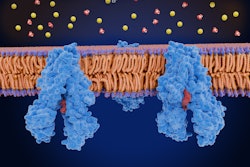
According to a study recently published in Nature Communications, frequent non-coding FOXF1 gene deletions may be associated with the development of Alveolar Capillary Dysplasia with Misalignment of Pulmonary Veins (ACDMPV), a rare, lethal disease that causes respiratory failure in newborns and infants. The research was conducted at the Phoenix Children’s Research Institute at the University of Arizona College of Medicine – Phoenix.
The FOXF1 protein is critical in pulmonary vascular development. DNA mutations in this genetic disease interfere with important regulatory regions, including the endothelial and mesenchymal enhancers.
“Prior to this study, we knew deletions and mutations in the FOXF1 gene locus can result in ACDMPV, so our goal was to identify FOXF1 enhancers associated with the disease so we can diagnose it more precisely in newborn babies,” said co-author of the study Vlad Kalinichenko, MD, PhD, director of the Phoenix Children's Research Institute at the University of Arizona College of Medicine – Phoenix.
This study, which was conducted in collaboration with Cincinnati Children's Hospital Medical Center, identified four upstream enhancers in the FOXF1 gene locus: FOXF1 Expression in the Lung (FEL) 1, 2, 3 and 4. Using single-nuclei multiome sequencing, the researchers also demonstrated how the FEL elements regulate cell-specific FOXF1 expression in pulmonary endothelium and stromal cells, such as fibroblasts and pericytes. Pulmonary endothelial cells are essential to the development of alveoli and stromal cells are a crucial component of lung development and structure.
The research team applied CRISPR/Cpf1 genome editing to mouse embryonic stem cells, further validating the cell-specificity of FOXF1 enhancers. In cases of human lungs with ACDMPV, the loss of one or more FEL enhancers was associated with non-coding FOXF1 deletions. Knowing this could lead to improved genetic screening for the disease, which currently relies primarily on exome DNA sequencing.
“Identifying mutations in the FOXF1 gene locus sooner will be critical for accurate genetic diagnosis of this severe congenital disease,” Dr. Kalinichenko said. “As we continue to gain additional insight into how genes work, it will improve our capabilities to implement effective therapeutic interventions in more common pulmonary disorders of newborns and infants, such as bronchopulmonary dysplasia and congenital diaphragmatic hernia.”






















